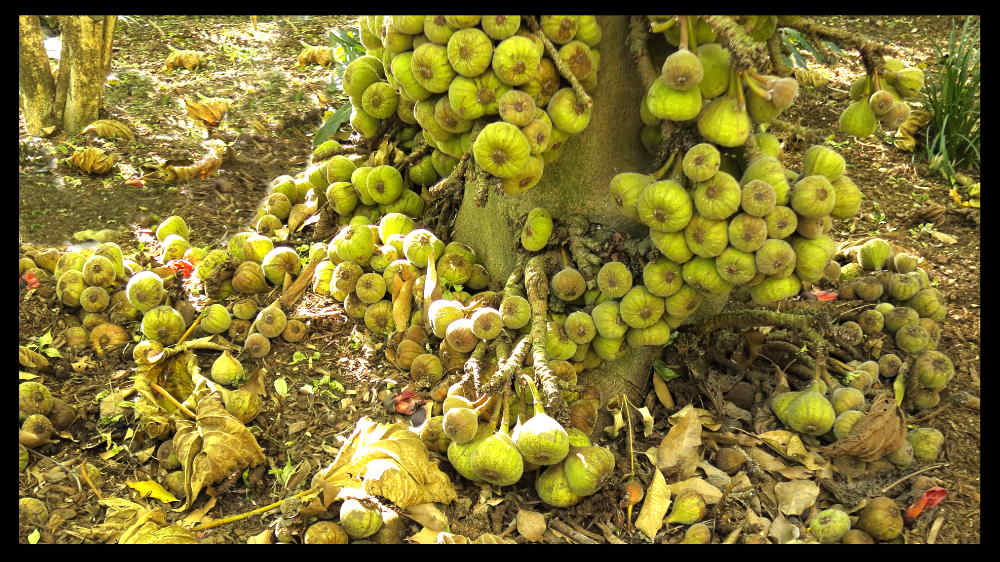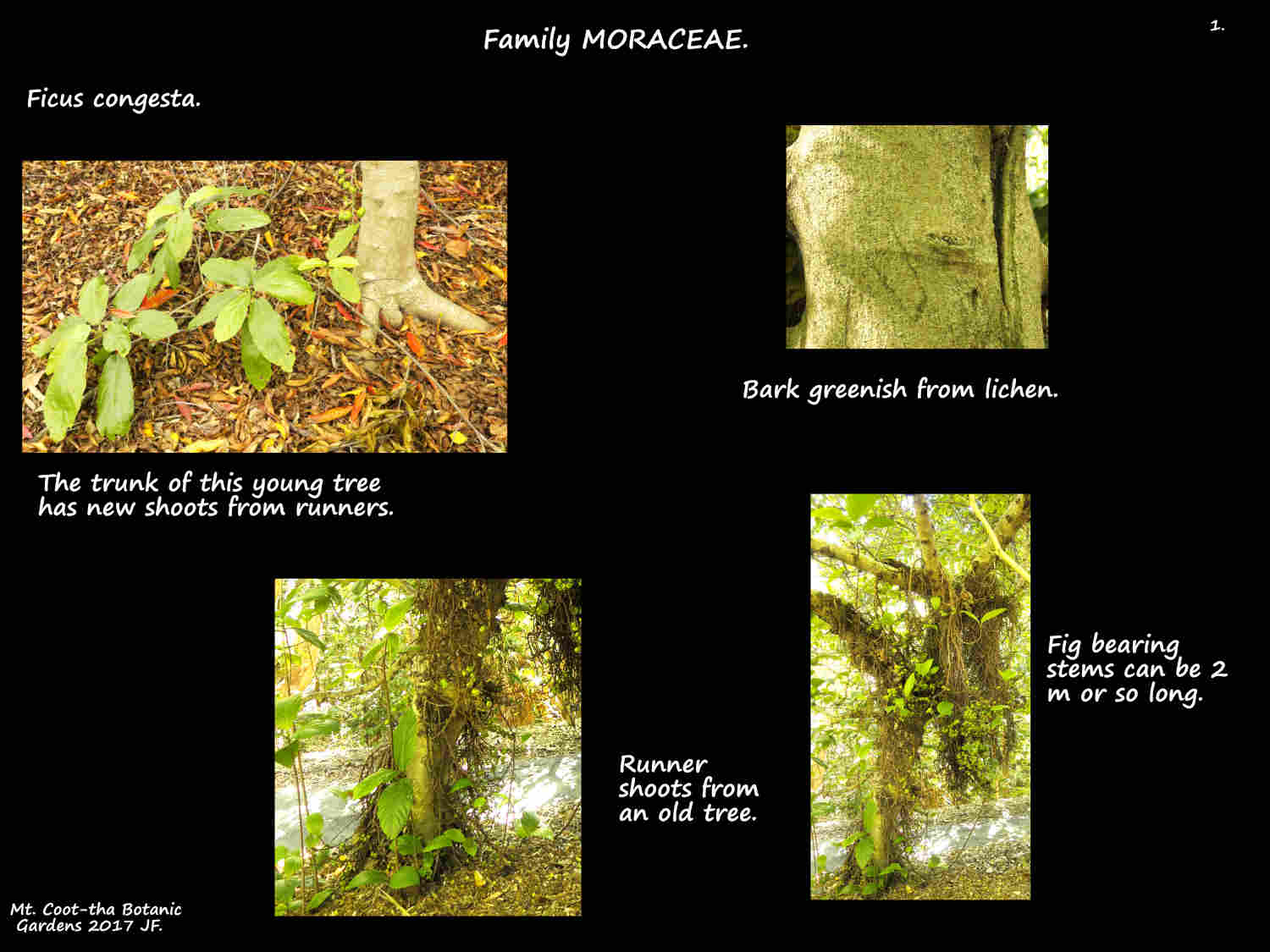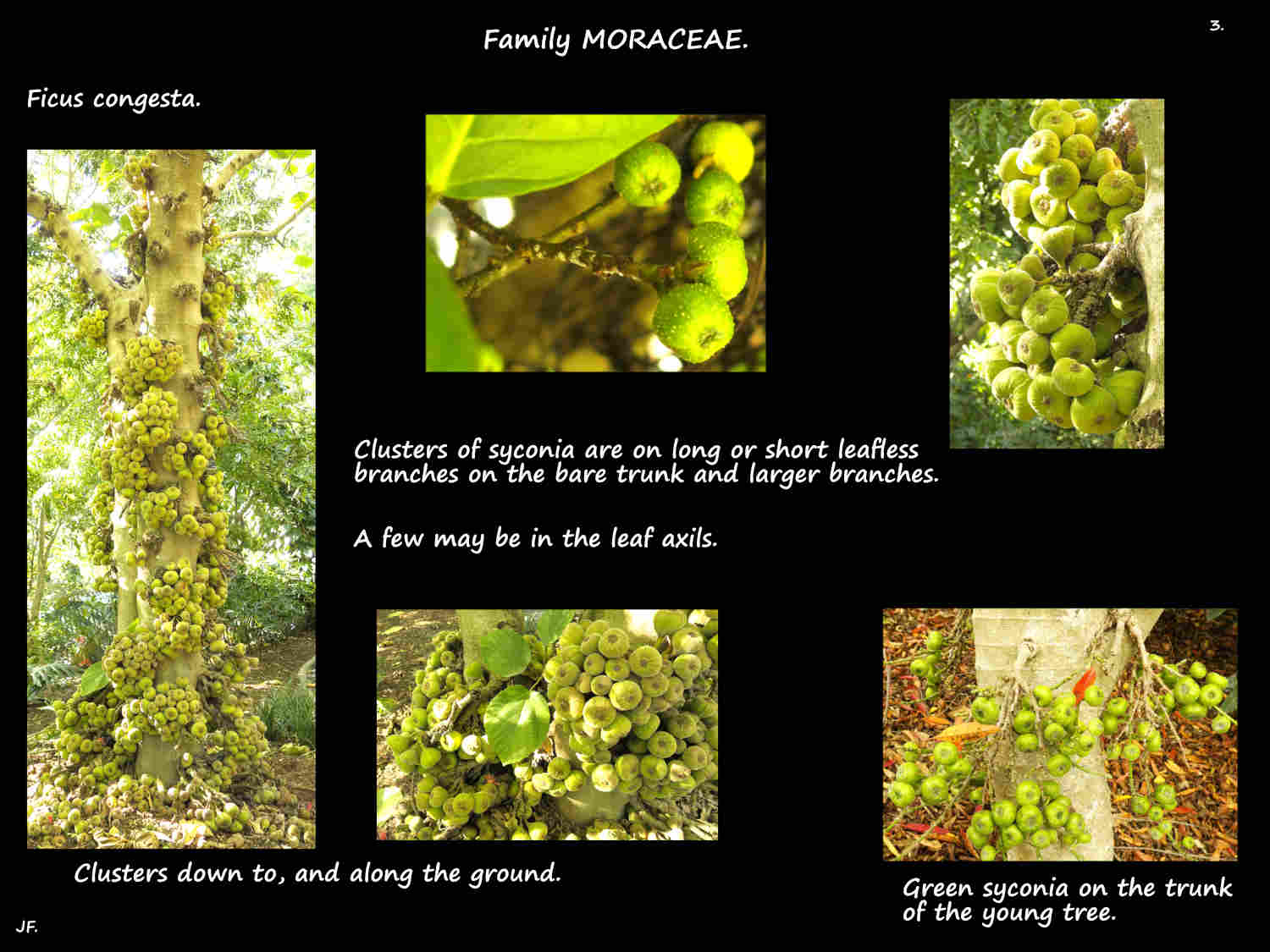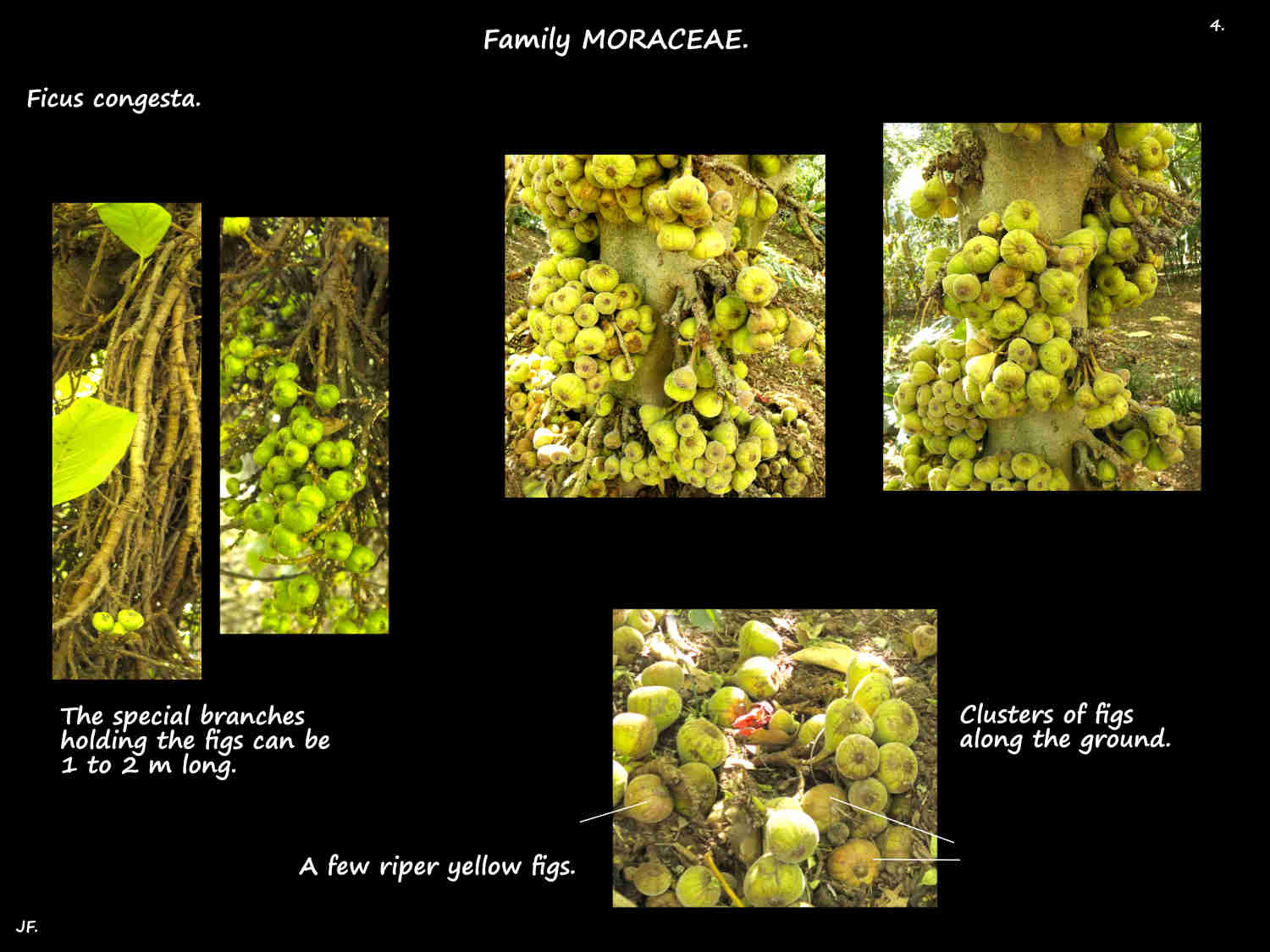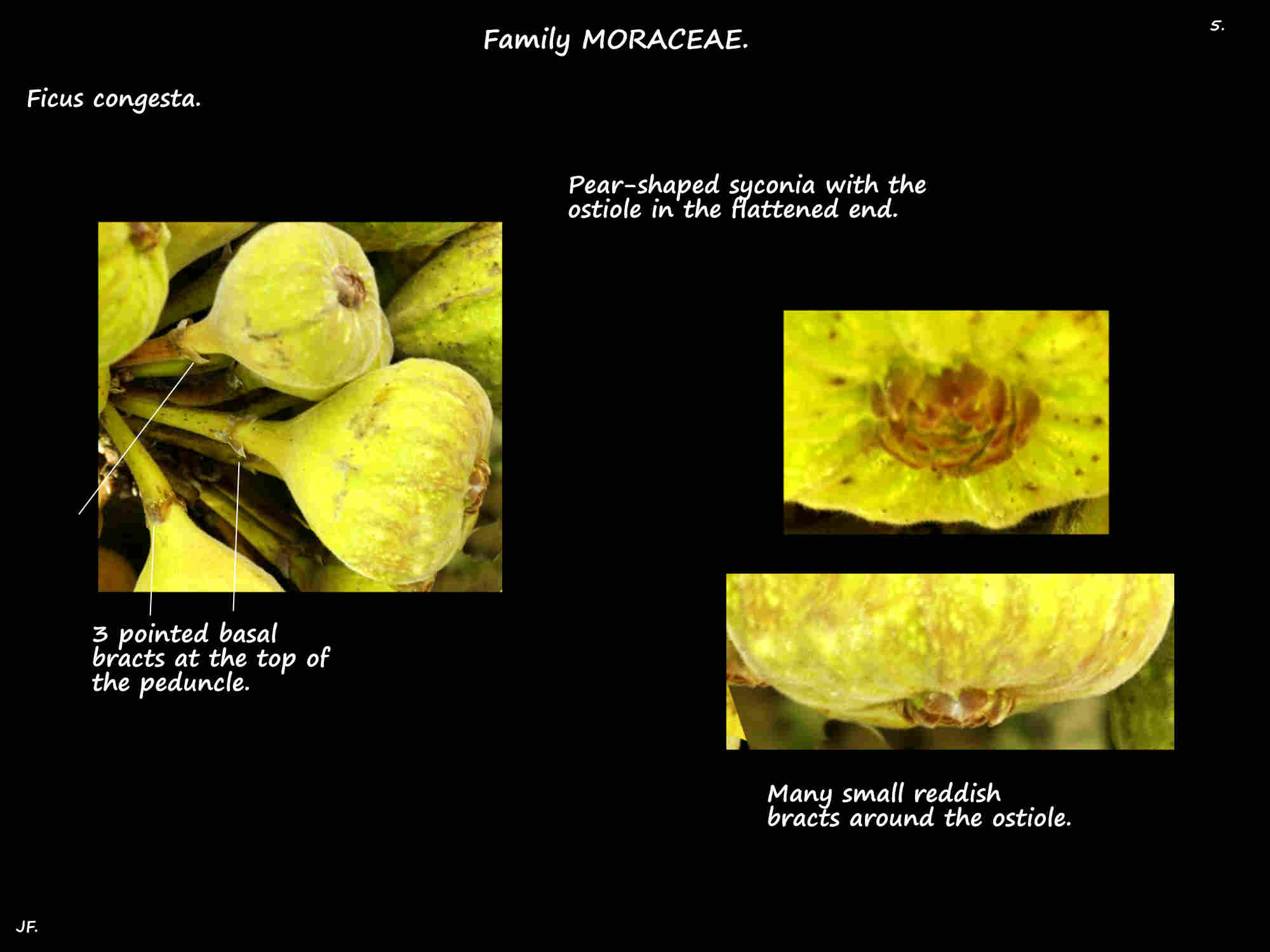Ficus congesta.
One of the Cluster figs it is commonly known as the Red-leaf Fig.
They are found in N.E. Queensland and areas to the north.
Two or three varieties are described with Ficus congesta var. congesta being found in Queensland.
They are spreading trees up to around 20 m high.
Runners from the base of the trunk may root and produce a new shoot.
Trees may also branch from the base.
Small branches have white or brown hairs that lie flat along the surface.
Varieties differ in having sparse or dense hairs on the stems, leaves and fruit.
Broken branchlets and petioles have white latex.
The simple alternately arranged leaves are concentrated at the branch ends.
This sometimes gives the appearance of the leaves being almost opposite.
The petiole, up to 4 cm long has reddish hairs.
Leaf buds are covered by narrow triangular stipules around 2 cm long.
Their outer surface has sparse to dense white or brown hairs.
Stipules fall leaving a scar on the branch.
The large flat leaf blades are up to 25 cm long by 13 cm wide.
The blade is typically widely elliptic but occasionally it is widely ovate.
The tip is pointed, the base round, wedge or heart-shaped.
The edge has small blunt teeth (crenulate) and there are up to 10 pairs of lateral veins.
Depending on the variety hairs on the lower surface may be absent, few or dense.
New leaves are reddish or copper-coloured.
The inflorescence is a syconium on a stalk (peduncle) 1 cm long.
They commonly occur in small to large clusters on special leafless branches growing from the larger branches or the trunk even at ground level.
They may also grow in the axils of leafy branches.
The syconia, around 2 cm long are pear-shaped, a flattened sphere or a disc.
The distal end, with the opening or ostiole is slightly depressed.
There are 3 basal bracts at the top of the peduncle.
Covering the ostiole are small bracts which continue down the track through the wall.
There are hairs on the syconium but none among the flowers lining the inner wall.
Male flowers are found in a ring around the ostiole so pollen sticks to the departing female wasps.
Flowers have 2 tepals and 1 stamen with 2 prominent pale pollen sacs.
Most of the flowers are fertile females that attach directly to the syconium wall.
The perianth segments (calyx lobes) are fused forming a cup-like structure with a flat top.
The ovary has one ovule and a long reddish style and stigma.
Along the style are long narrow processes that are thicker than hairs.
The gall flowers are scattered among the fertile females.
These are sterile females and the pollinating wasp lays her eggs in the ovary.
The mature fruit are figs that ripen from green to yellow then brown.
With the dense clusters many fall to the ground.
J.F.
